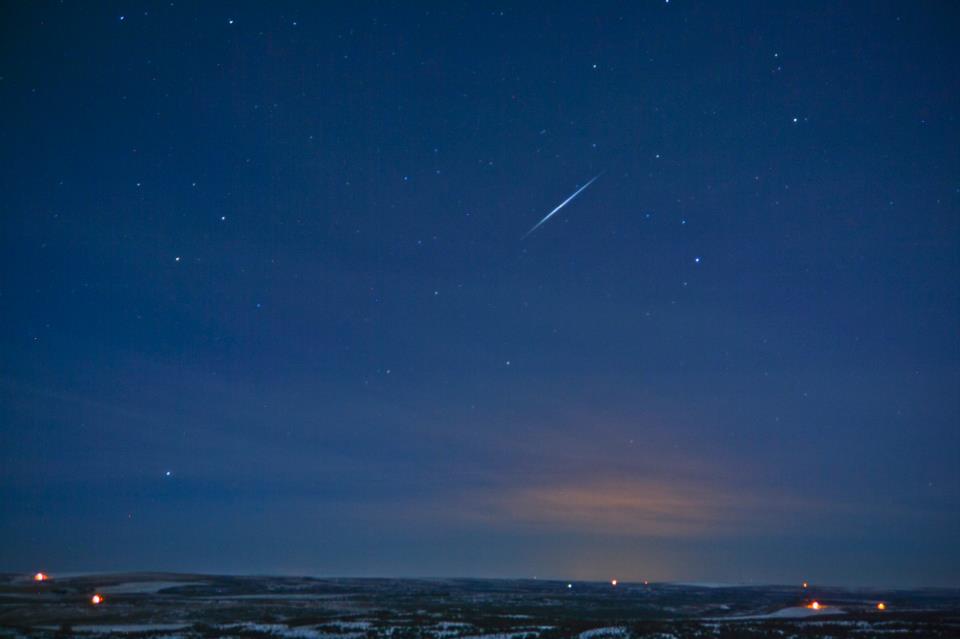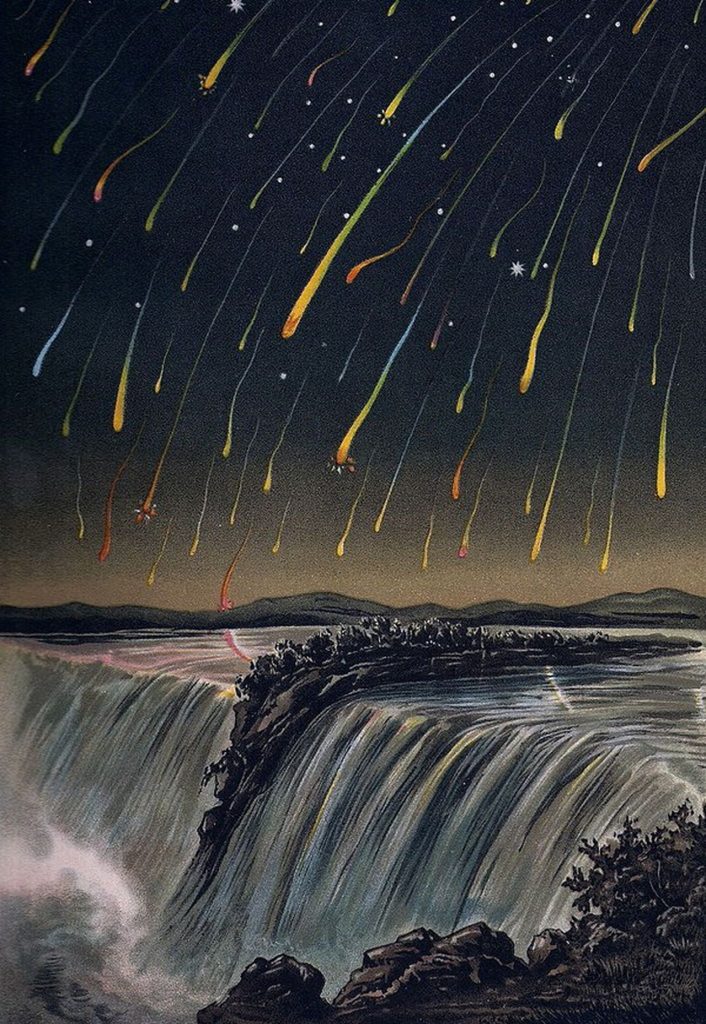

What are the odds?! This amazing image is from Emma Zulaiha Zulkifli in Sabah, on the island of Borneo in Malaysia. She caught a bright meteor streaking right in front of the bright planet Venus on December 15, 2018. She wrote: “Yes, the meteor actually did streak in front of Venus! Only a bit of tweaking on contrast and noise reduction done in Photoshop CC2018.” Fuji X-A1, 18-55mm f2.8 with Tripod, Exif : iso2000, 30?, f2.8. Way to go, Emma!
When is the next meteor shower? EarthSky’s 2020 meteor shower guide
Meteors, and meteor showers in particular, are one of the most amazing sights that you can see when you look at the night sky. Those brief flares of light are a reminder that many small rocky objects and particles – most about the size of a grain of sand – enter Earth’s atmosphere every day and harmlessly burn up. Seeing this is cool enough, but is it possible to actually hear meteors as well?
Sometimes, after a meteor shower, people have reported hearing the meteors as they disintegrated in the atmosphere. Some exceptionally bright meteors have been reported as being accompanied by a low hissing sound – like bacon sizzling. But is that what is actually happening?
Astronomers now think it is.

2013 Quadrantid meteor by EarthSky Facebook friend Susan Jensen in Odessa, Washington.
For years, professional astronomers dismissed the notion of sounds from meteors as fiction. Why? Typically, a meteor burns up about 100 kilometers – or 60 miles – above the Earth’s surface. Because sound travels so much more slowly than light does, the rumblings of a particularly large meteor shouldn’t be heard for several minutes after the meteor’s sighting. Something like hearing thunder after the lightning flashes have already happened. A meteor 100 kilometers high would boom about five minutes after it appears. Such an object is called a “sonic” meteor. The noise it makes is related to the sonic boom caused by a faster-than-sound aircraft.
But sometimes, meteors seem to make a sound at the same time that they are being seen. These meteors would be seen and heard simultaneously. Is this possible? Yes, according to astronomers. There are what astronomers call “electrophonic meteors.”
Basically, the explanation is that these meteors give off very low frequency (VLF) radio waves, which travel at the speed of light. Even though you can’t directly hear radio waves, these waves can cause physical objects on the Earth’s surface to vibrate. The radio waves cause a sound, which our ears might interpret as the sizzle of a meteor shooting by.
As reported by Live Science in 2013, one classic example of people hearing meteors occurred in A.D. 817, as a meteor shower passed over China. Many observers reported hearing buzzing, sizzling or hissing sounds, according to a 1992 report by Colin Keay, a physicist at the University of Newcastle in Australia. Something similar happened in England in 1719.

The 2017 Perseid meteor shower peaked in moonlight, but that didn’t stop Hrvoje Crnjak in Šibenik, Croatia, from catching this bright Perseid on the morning of August 12, 2017. Notice the variations in brightness and color throughout, and the little “pop” of brightness toward the bottom. A brightness “pop” like that comes from a clump of vaporizing debris. Thank you, Hrvoje!
According to astronomer Edmond Halley:
Of several accidents that were reported to have attended its passage, many were the effect of pure fantasy, such as the hearing it hiss as it went along, as if it had been near at hand.
It wasn’t until the 1970s and later that these reports began to be taken more seriously. As reported by Keay in the journal Asteroids, Comets, Meteors, people who claimed they could hear meteors were dismissed as crackpots.
But then, hundreds of reports came from the sighting of a large meteor over New South Wales in 1978. Keay analyzed 36 of those reports.
VLF waves travel at the speed of light, so observers would hear them the same time that they saw the meteors pass overhead. But those waves need something physical to act as a transducer and create the sound. Keay found that various objects such as aluminum foil, plant foliage like pine needles, thin wires, dry frizzy hair and wire-framed eyeglasses could all produce those kinds of sounds. That phenomenon is called electrophonics. According to one observer:
When I was out [viewing the Leonid meteor showers in 1999], I had my head back on the ground and heard a sizzling sound. My head was close to grass and leaves and I wear wire-frame glasses as well. The sound was definitely simultaneous with the observation of a rather large streak.

Artist’s illustration of the Leonid meteor shower in 1833, one of the most spectacular in history. Image via NJ.com/ Edmund Weiss.
Keay’s hypothesis was further tested during the Leonid meteor shower of Nov. 18, 1999. The researchers detected distinct VLF sounds, and also found that many of the meteors were not even visible by eye, but were heard. In fact, 50 times more meteors were detected by their VLF signatures than by sight alone. Dennis Gallagher, a space physicist at the NASA Marshall Space Flight Center, said:
What makes this exciting is that we’re talking about a phenomenon that has been experienced by people for perhaps thousands of years. Even in modern times folks who reported hearing such sounds were ridiculed. It was only about 25 years ago that Keay was able to do the research and legitimize the experiences of all those generations of people. It shows there are still wonders in nature yet to be recognized and understood. We should take this experience with meteors as reason to open our minds to what may yet be learned.
Fun fact: when meteoroids – rocky bodies from space that can be as small as dust particles – are burning up in the atmosphere, they are called meteors. When one is large enough to survive entry into the atmosphere and hit the ground, it is called a meteorite.
Bottom line: Can you hear meteors as well as see them? Scientists say yes.
Source:
https://earthsky.org/space/whoosh-can-you-hear-a-meteor-streak-past